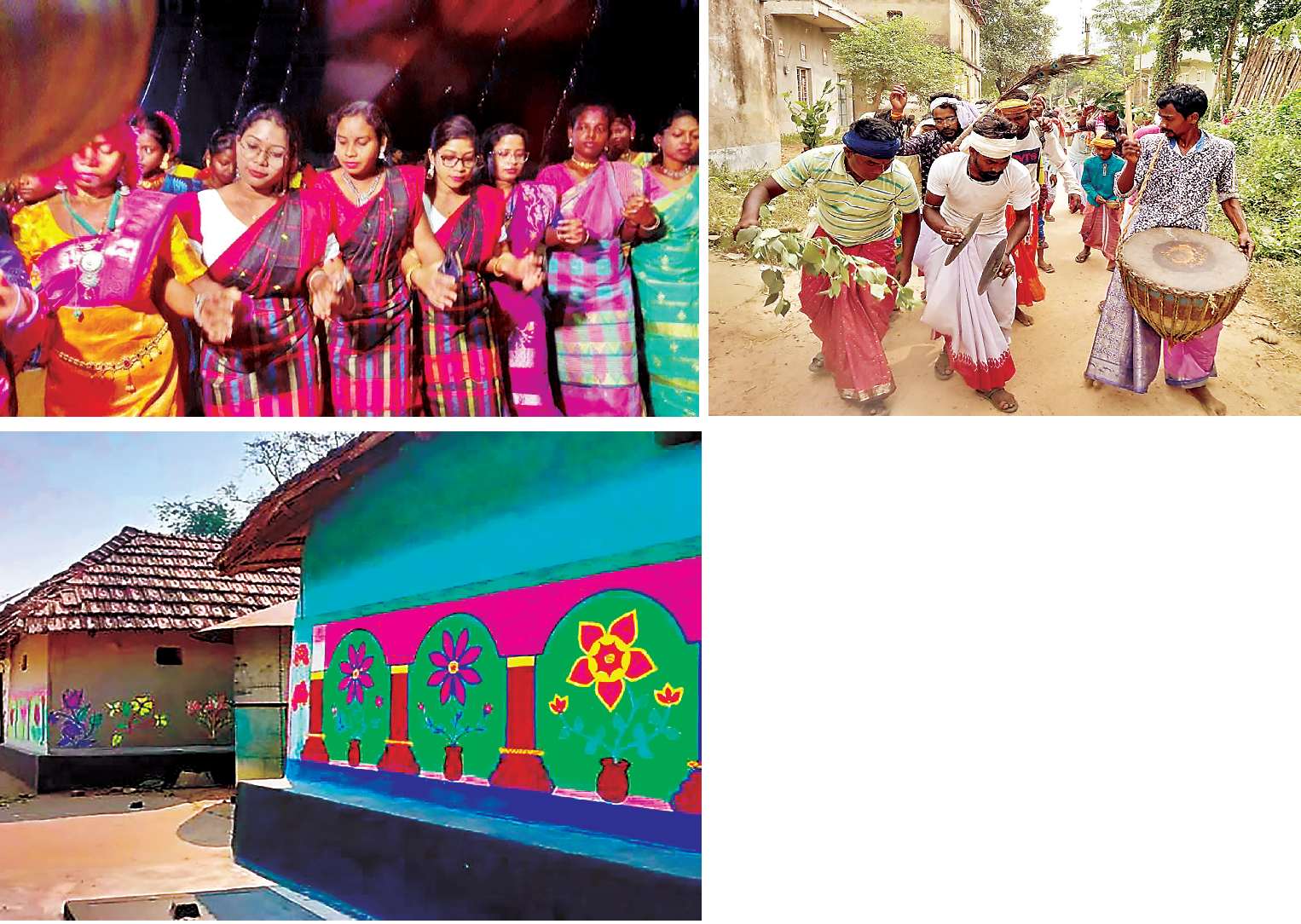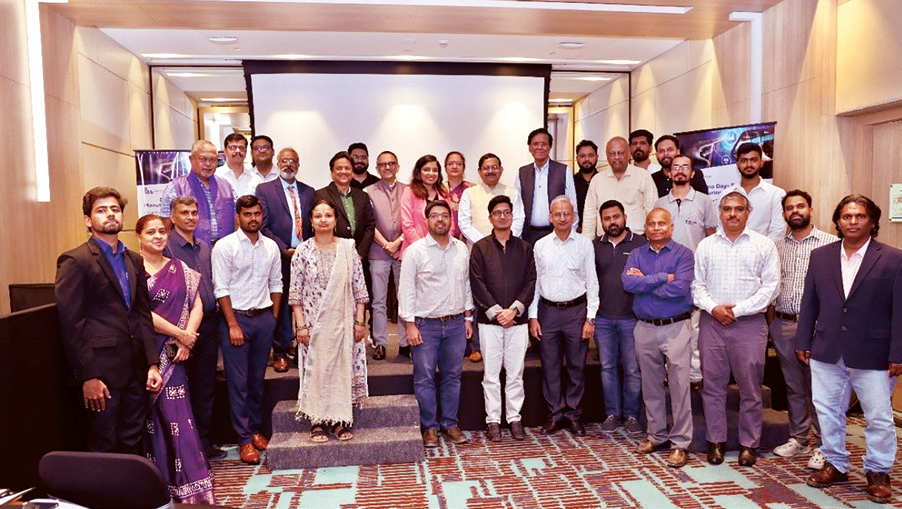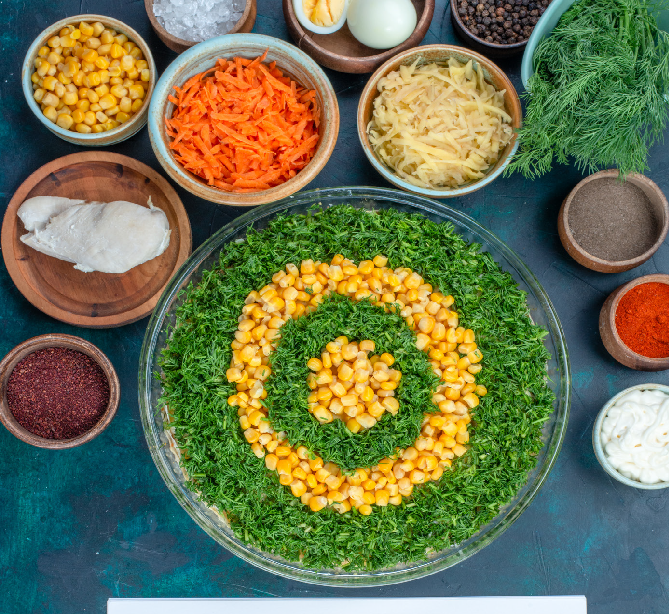
Bandhna Parab: Heartbeat of Jangal Mahal’s cultural harmony
Four days of cow and nature worship, games, animal sacrifice, feasting, dancing and singing mark this biggest festival among the tribal communities
Madhu Sudan Chatterjee
These days, the resounding sound of Dhamsda, Madal (percussion instruments) can be heard in the Jangal Mahal areas of West Bengal. Dancing, singing, and entertaining guests are going on in a frenzy during the Bandhna festival, which will continue till November 15, the full moon day. The festival is known as Sohrai Utsav among the Santal tribal community of Jangal Mahal. For the Kurmi community, it is known as Garoya festival. In the local language, these two festivals are collectively called Bandhna Parab (bonding festival). This ancient festival has been going on with full fervour since ages. Yet, its attraction refuses to diminish. Sohrai and Garoya are primitive traditional festivals celebrated by the Santal, Munda, Bhumij, Kora, Sabar tribal communities, and Kurmi people (OBC -Other Backward Classes - category) of Bengal’s Jangal Mahal. It is observed in the Bengali month of Kartik (November), which marks the paddy harvesting season. The festival coincides with Diwali (the festival of light). For the people of Jangal Mahal, the New Year begins with the Sohrai festival, which is celebrated with great enthusiasm to welcome new crops and pray that their land should yield crops throughout the year. The people believe that the cow is the biggest contributor to farming.
So, one of the main attractions of this festival is to take care of cows separately, every four days. People thank their cattle for their hard work in farming and pray for their well-being. ''It is basically a festival of harmony. It has nothing to do with Diwali. Humans need food to survive. People here have been celebrating this festival for years as an expression of joy while harvesting the foodgrain (paddy)," Rohini Mahato at Mallikdanga of Ranibandh told this reporter. There are some characteristic differences in the celebrations between the Santals and Kurmi people. The latter celebrate this festival mainly for four days to pay respect to the cow in various ways. Aalpona (decorative drawings) is done in front of the door of every Kurmi-dominated house with liquid rice flour. The beginning of Diwali is on the night of Kali Puja (worship of goddess Kali), the first day of the Bandhna ceremony. Cows are worshiped with songs that are locally called Ahira gan (song), and when these animals are tied to wood poles and games are played, these Ahira songs are sung.
This game is locally called gorukhuta (cow play). The rest of the time, there is no dancing or singing. The tribals Bhumij, Shabar, Kora, Lodha people also worship the cow like the Kurmis and sing for the cow and play around the pole. It is interesting that only certain groups sing this song. They are called Dhangira. The interesting thing is that despite having their own language, when the people of Santal and other tribal communities perform their ritual with cows, they sing this Ahira song in Kurmali language. This Ahira song is one of the best examples of the harmony that has been created through this Bandhna Utsav around the Jangal Mahal. “Sohrai or Bandhna festival is the biggest festival of the tribal community. In village after village in Jangal Mahal, people celebrate this festival of grain and cattle worship. One of the attractions of this festival is inviting relatives, especially the daughter and son-in-law, who are given new clothes. Wall paintings are done on every house.
Since adivasis are nature worshippers, so pictures of trees, birds, various cattle are painted,” said Ganesh Murmu, a folk artist from Barishal village in Bankura. The paintings are done with natural colours collected locally. This is not only a festival of joy and gratitude but also a way of preserving and promoting a rich artistic tradition that showcases the creativity and skill of the Kurmis and other tribal men and women. It is a festival that celebrates the harmony between humans, animals, and nature. Therefore, this festival is considered bigger than the Sharodiya Utsav of Jangal Mahal.
 English daily published in Bengaluru & Doha
English daily published in Bengaluru & Doha






